The rap on Corsica, from both the mainland French and Americans who have visited the island, is that it’s a world apart from France—indeed, there’s a longstanding push for more autonomy, or even independence—and that the people are unwelcoming to outsiders. I can’t speak to the first issue; Corsica felt like France to me, and because I don’t speak French, I was unaffected by the regional language and dialect. But I found the second assertion to be an exaggeration. The Corsicans we met were no unfriendlier than in any place that relies on tourism.
Then again, we hardly went deep. After two weeks in Paris, a non-city destination sounded like just the thing. My husband, Adam, and I rented a villa with friends outside the town of Bonifacio, near the island’s southern tip, knowing that we’d focus more on R&R than travel-travel.
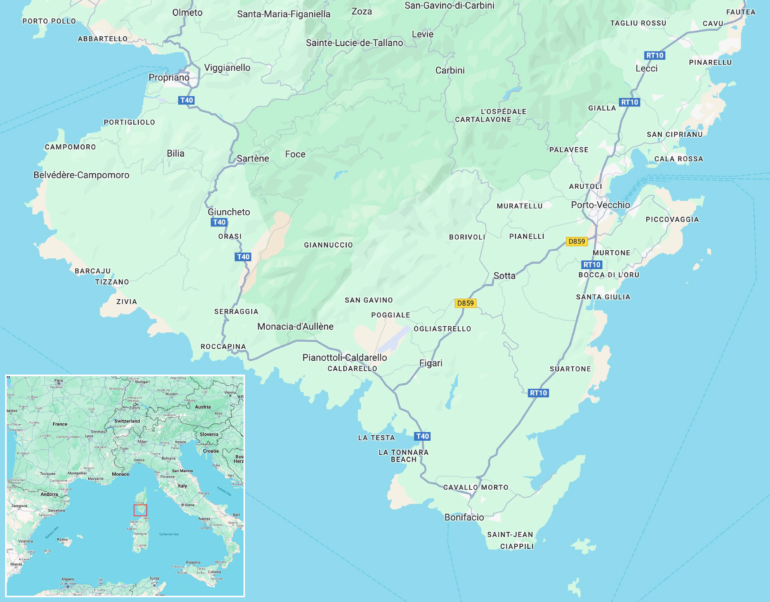 We flew from Paris to Figari, a 25-minute drive from Bonifacio (or Bunifaziu, as it’s called in Corsican). Here’s what you see when you exit the airport terminal—those are car rental agencies in the distance—which I think is an oddly informative view that you rarely find in travel coverage.
We flew from Paris to Figari, a 25-minute drive from Bonifacio (or Bunifaziu, as it’s called in Corsican). Here’s what you see when you exit the airport terminal—those are car rental agencies in the distance—which I think is an oddly informative view that you rarely find in travel coverage.
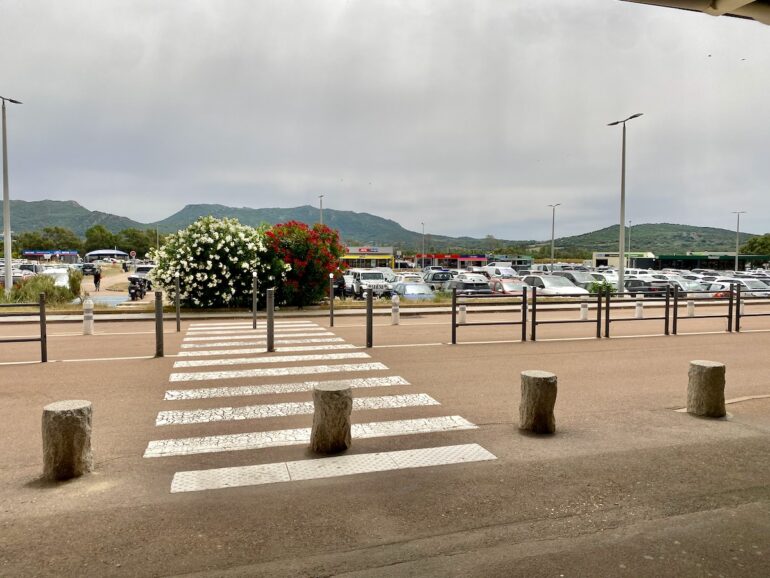 Renting two small cars was the best decision we made, because the roads are often very narrow, with few pull-outs and a million ways to scratch your vehicle.
Renting two small cars was the best decision we made, because the roads are often very narrow, with few pull-outs and a million ways to scratch your vehicle.
 We liked nearly everything about the villa: it was handsome, and the owners clearly use it, for the kitchen was outfitted with everything we needed. And the view—with the Lavezzi Islands on the horizon—was spectacular.
We liked nearly everything about the villa: it was handsome, and the owners clearly use it, for the kitchen was outfitted with everything we needed. And the view—with the Lavezzi Islands on the horizon—was spectacular.


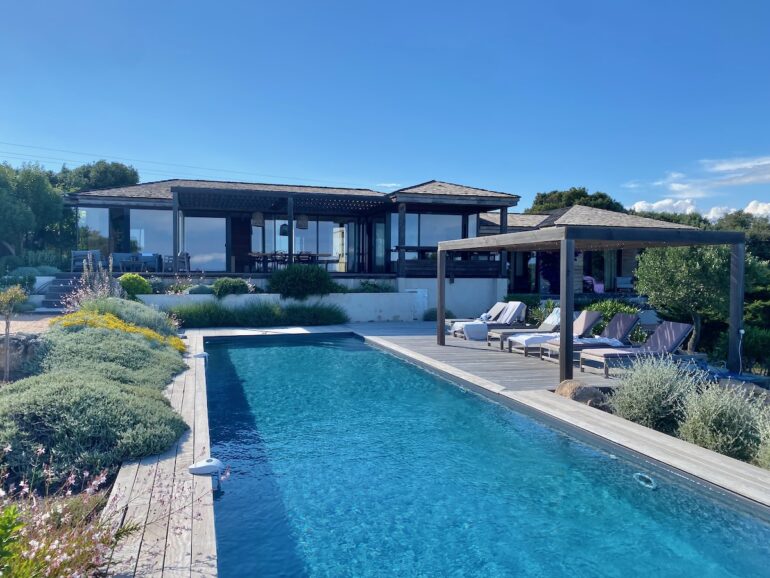
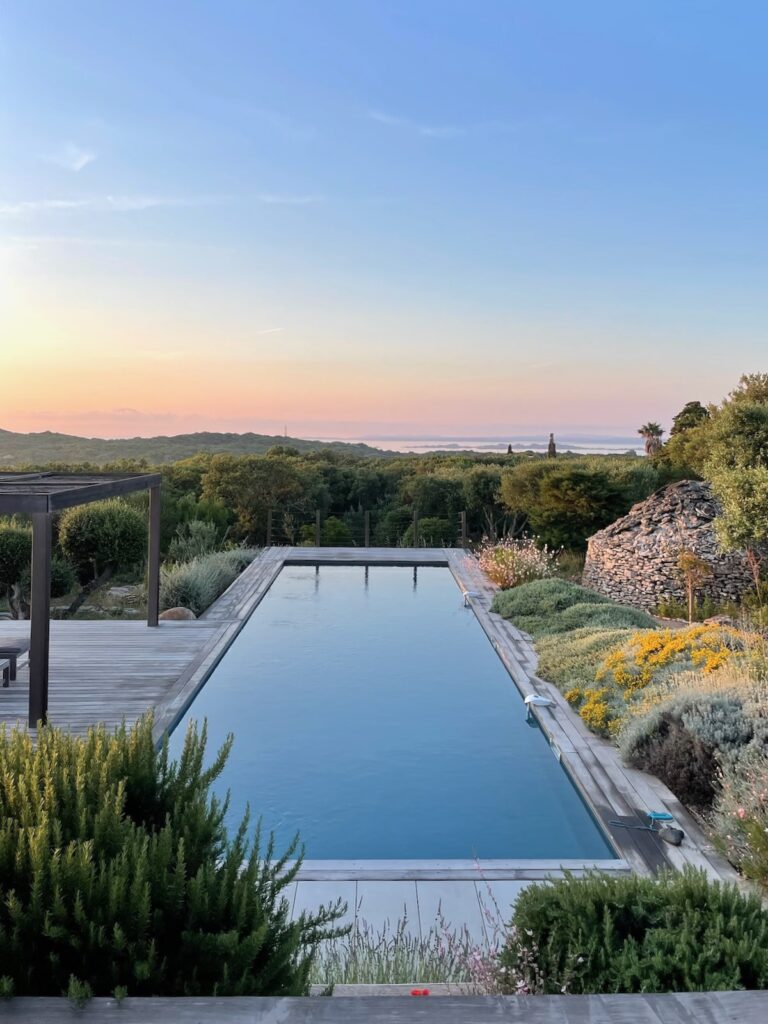 But there was one problem. Le Collectionist markets the house as a four-bedroom, four-bathroom house suitable for up to eight guests. Nowhere does the listing mention that there are only two toilets, in WCs off the hallways. Sharing one with our friends’ babysitter wasn’t a true hardship (she may feel otherwise, of course), but it was far from ideal. Le Collectionist insisted that in Europe, a bathroom does not guarantee a toilet, which may be so, but international travelers surely assume that it does, and the burden falls on the company to make the arrangement clear. Just as with our Paris apartment, user reviews would have helped manage expectations.
But there was one problem. Le Collectionist markets the house as a four-bedroom, four-bathroom house suitable for up to eight guests. Nowhere does the listing mention that there are only two toilets, in WCs off the hallways. Sharing one with our friends’ babysitter wasn’t a true hardship (she may feel otherwise, of course), but it was far from ideal. Le Collectionist insisted that in Europe, a bathroom does not guarantee a toilet, which may be so, but international travelers surely assume that it does, and the burden falls on the company to make the arrangement clear. Just as with our Paris apartment, user reviews would have helped manage expectations.
Moving on…. Bonifacio is on a peninsula that forms a long natural harbor, with a clifftop fort at the end.
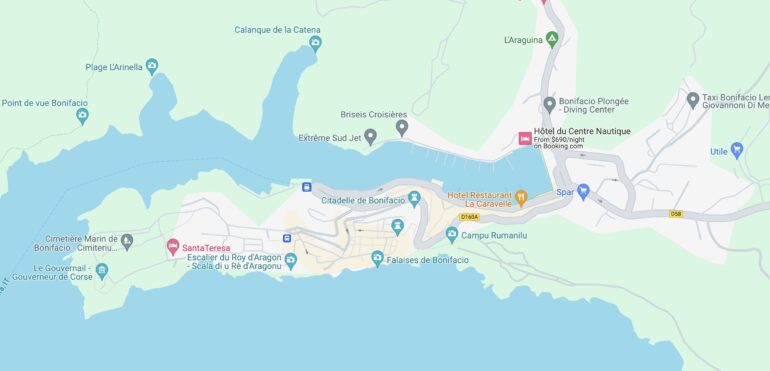 The shops and restaurants are touristy, but the location is crazy beautiful.
The shops and restaurants are touristy, but the location is crazy beautiful.
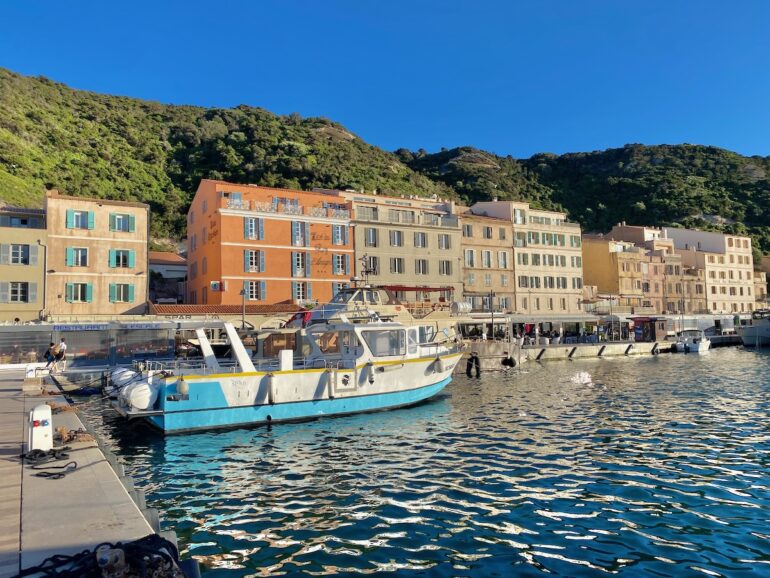
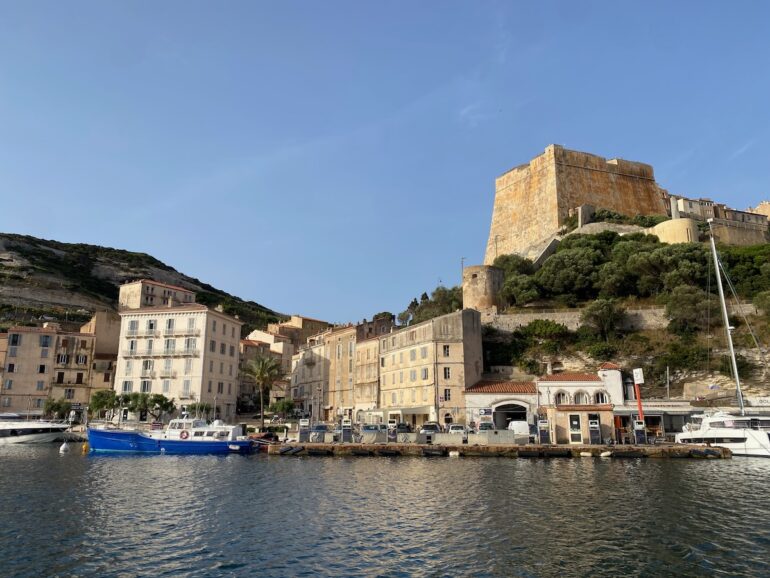 That said, the buildings along the northern side were built later in a drab, utilitarian style. It was a wasted opportunity.
That said, the buildings along the northern side were built later in a drab, utilitarian style. It was a wasted opportunity.
 Both sides of the town are pressed up against the cliff walls—and even into them.
Both sides of the town are pressed up against the cliff walls—and even into them.
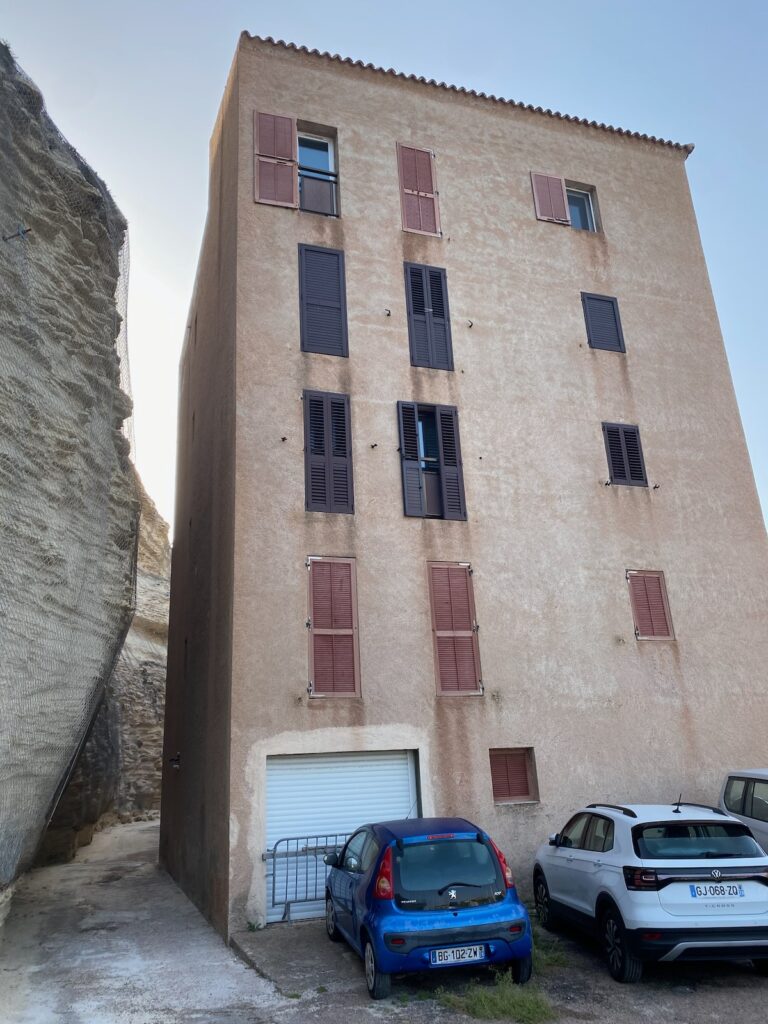
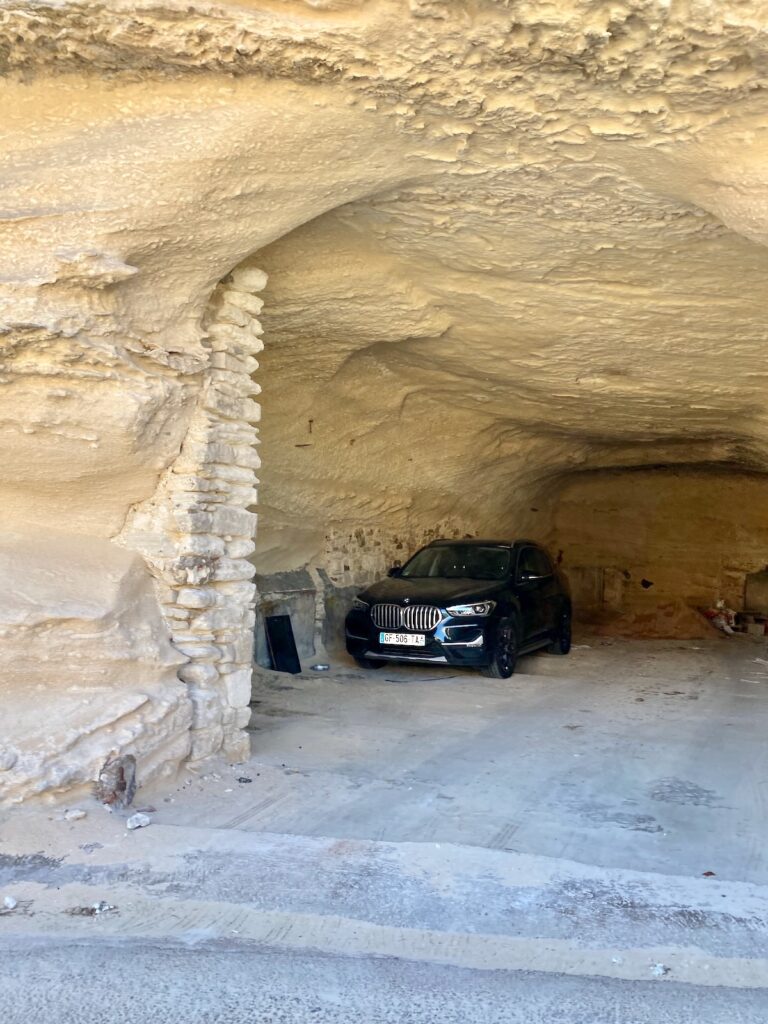 On the peninsula, a steep sidewalk leads partway up the hill…
On the peninsula, a steep sidewalk leads partway up the hill…
 …at which point you can turn right or left. Go right and you continue up to the bluff where the fort is; shops, restaurants, and other businesses line the way. The plateau is a mix of old and new, including a cemetery that looks like a miniature Rodeo Drive and a very modern preschool. There’s also the De Renava contemporary art museum, which we skipped for no good reason other than we were museumed out after Paris.
…at which point you can turn right or left. Go right and you continue up to the bluff where the fort is; shops, restaurants, and other businesses line the way. The plateau is a mix of old and new, including a cemetery that looks like a miniature Rodeo Drive and a very modern preschool. There’s also the De Renava contemporary art museum, which we skipped for no good reason other than we were museumed out after Paris.
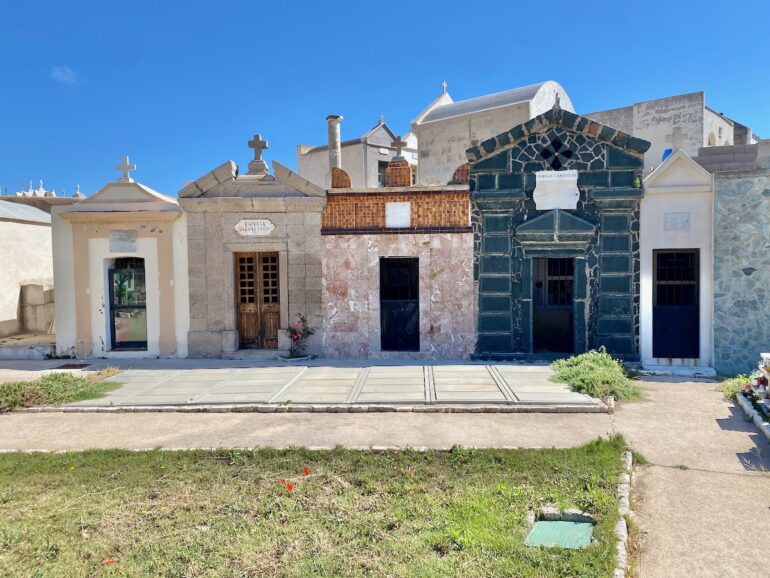
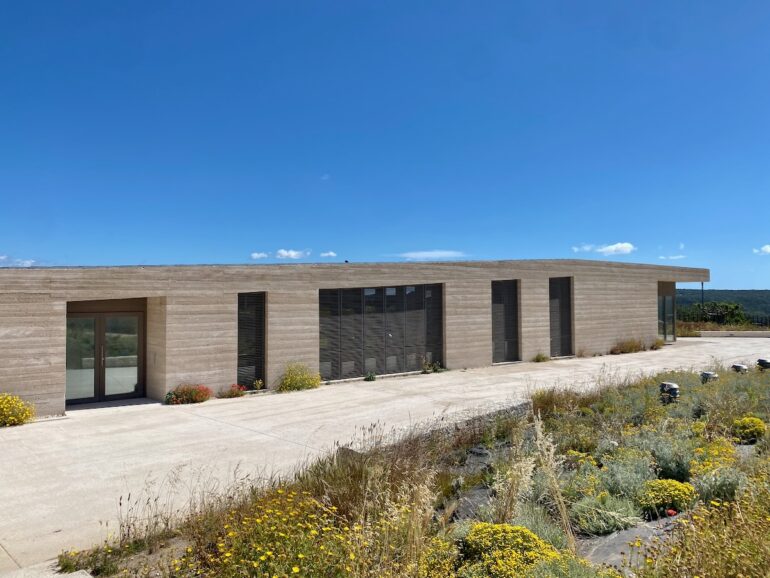 And we all loved La Minute Moule, an unassuming restaurant devoted to mussels and frites.
And we all loved La Minute Moule, an unassuming restaurant devoted to mussels and frites.
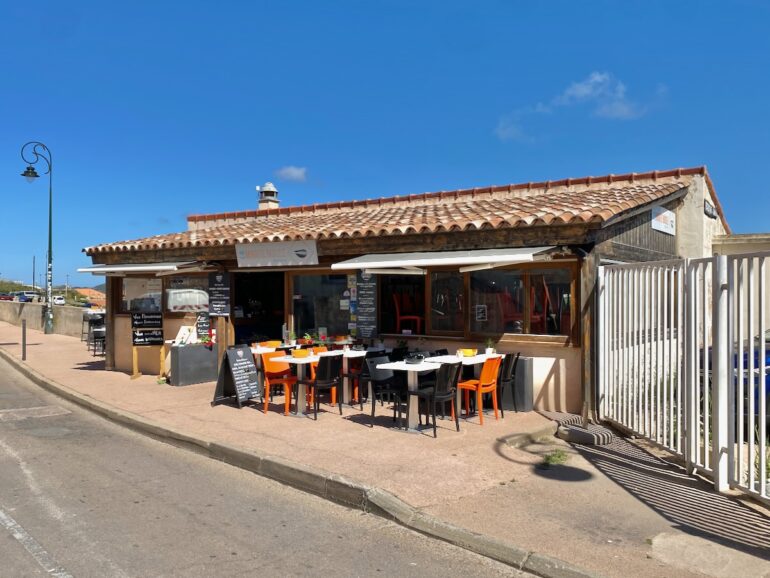
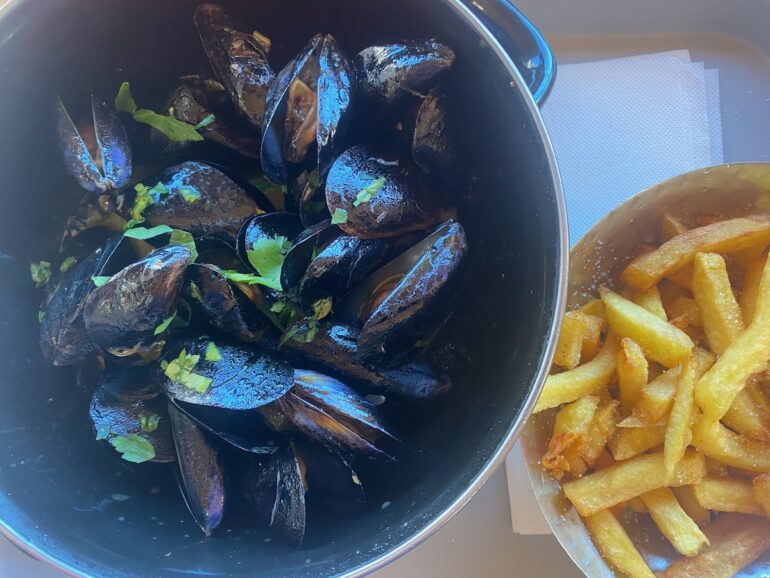 My favorite part of the trip was walking around the town and the fort in the mornings, before the sun got too hot and the other tourists arrived. I felt like a kid in a big, new playground, with the added benefit of drop-dead views.
My favorite part of the trip was walking around the town and the fort in the mornings, before the sun got too hot and the other tourists arrived. I felt like a kid in a big, new playground, with the added benefit of drop-dead views.
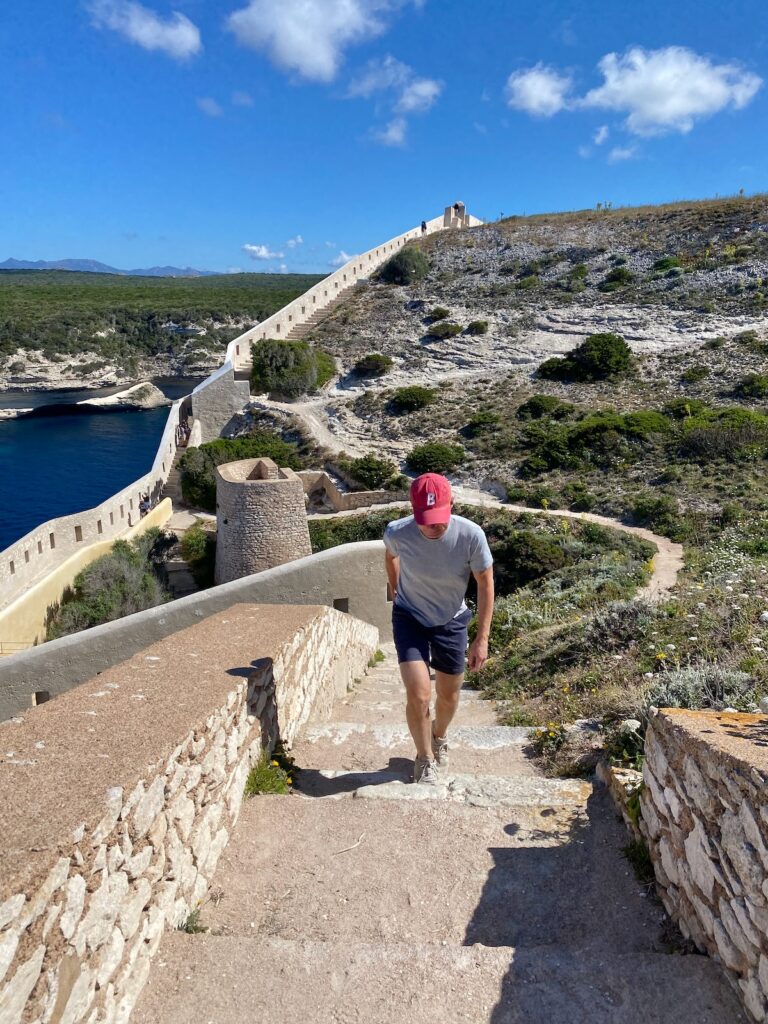
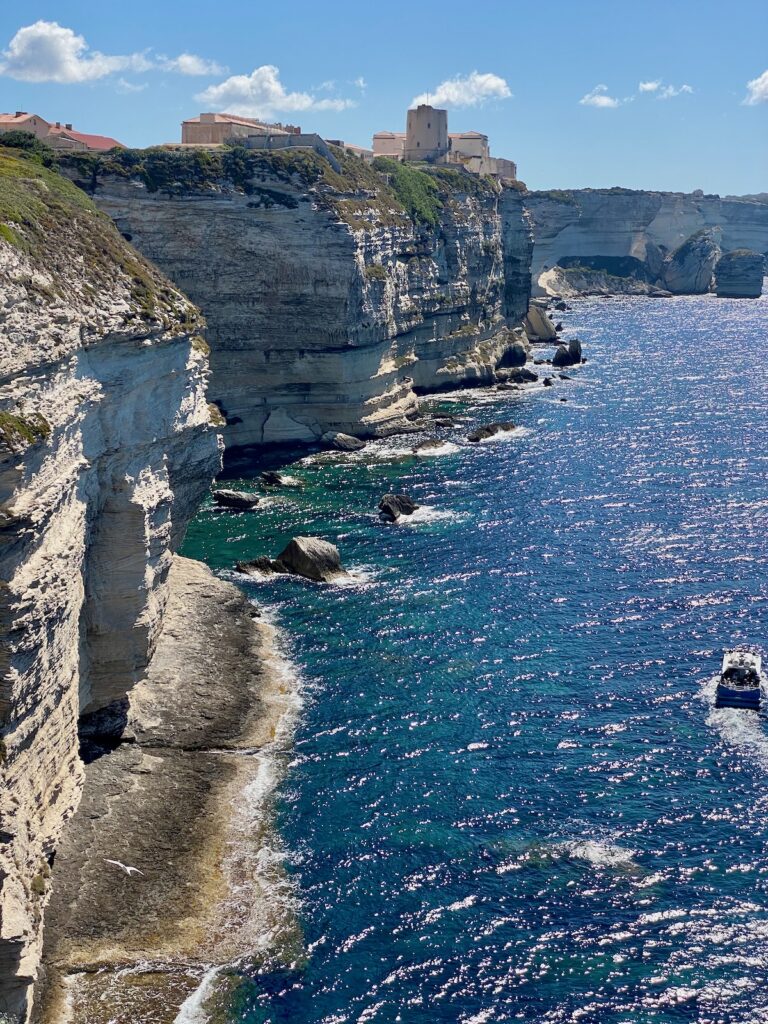
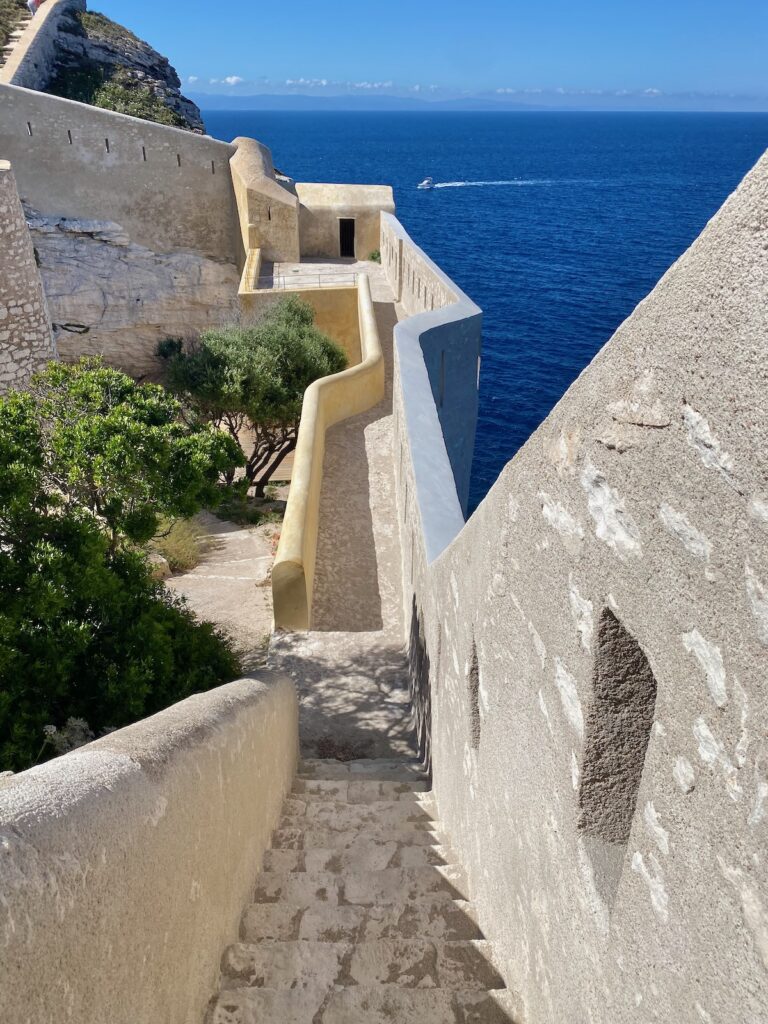 If you turn left at the intersection I mentioned earlier, you climb a steep path to a plateau with insane views down to the harbor and over to the fort. Huge yachts like the one in the second photo below have to back in.
If you turn left at the intersection I mentioned earlier, you climb a steep path to a plateau with insane views down to the harbor and over to the fort. Huge yachts like the one in the second photo below have to back in.
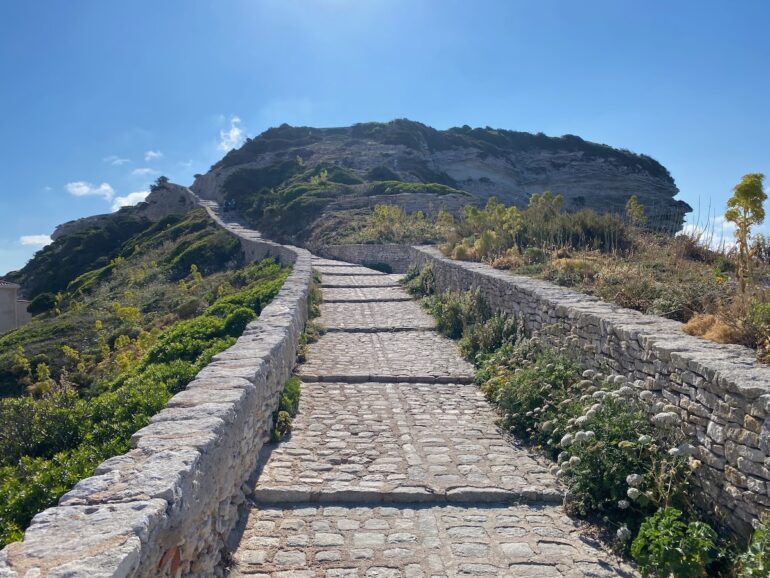

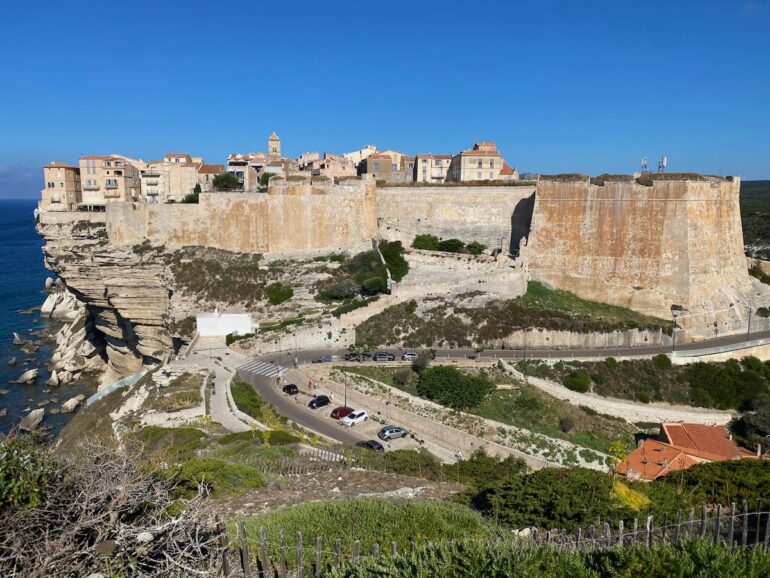
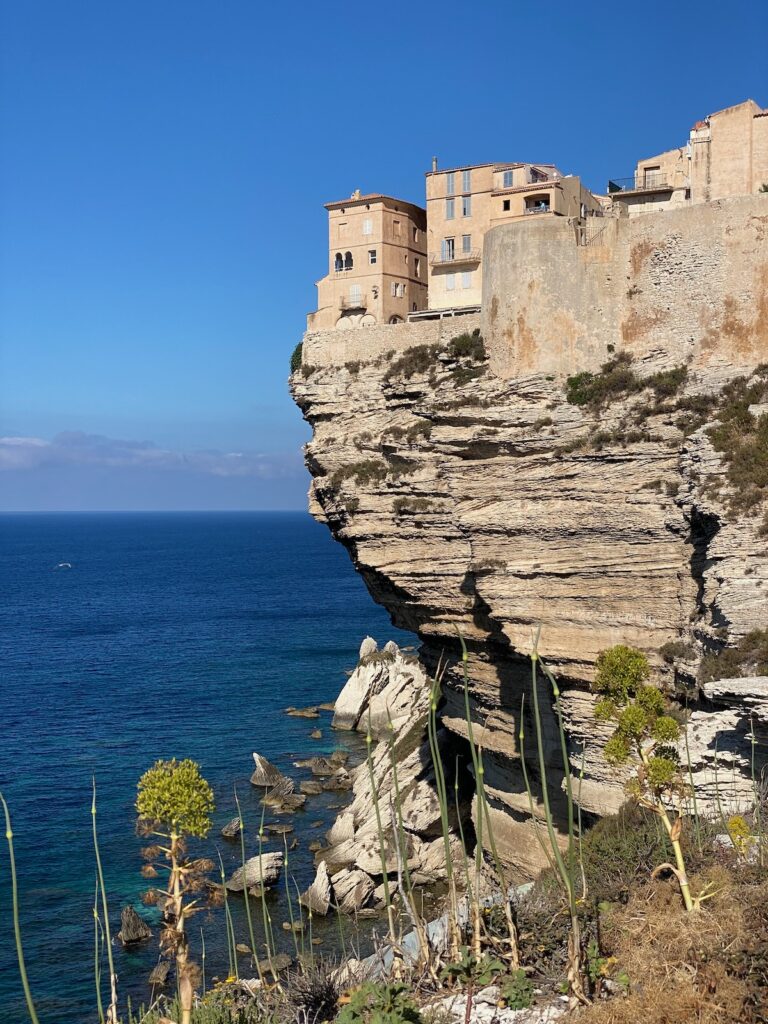 Amazing coffee would’ve been a real plus, but that doesn’t seem to be the French way. I enjoyed sitting at Bar du Quai anyway.
Amazing coffee would’ve been a real plus, but that doesn’t seem to be the French way. I enjoyed sitting at Bar du Quai anyway.
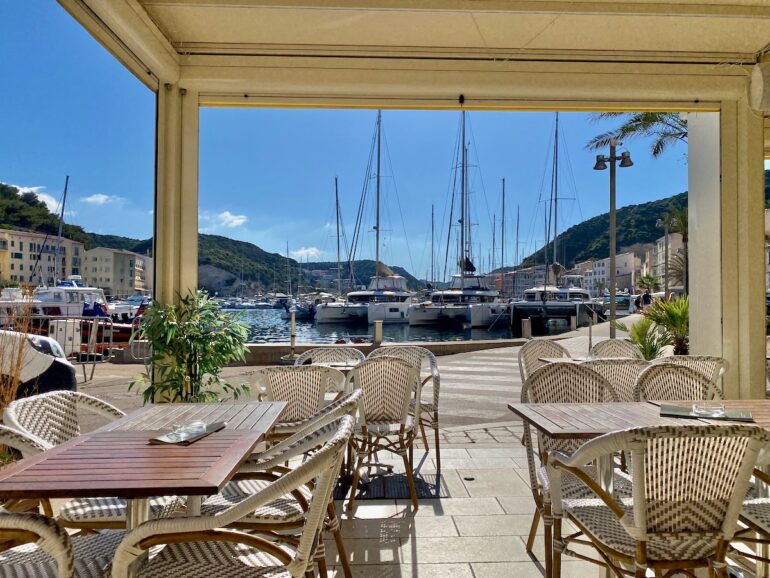 La Caravelle is likely the best restaurant in Bonifacio, and it’s by far the most fabulous. A photo can’t capture the buzz of the room, full of everything you want—cigars, facelifts—from a harborside restaurant in the Mediterranean. The best part was the proprietor and his sidekick, who visit every table with a little comic routine and a welcome glass of Champagne, and when you leave, they make a point of saying goodbye.
La Caravelle is likely the best restaurant in Bonifacio, and it’s by far the most fabulous. A photo can’t capture the buzz of the room, full of everything you want—cigars, facelifts—from a harborside restaurant in the Mediterranean. The best part was the proprietor and his sidekick, who visit every table with a little comic routine and a welcome glass of Champagne, and when you leave, they make a point of saying goodbye.
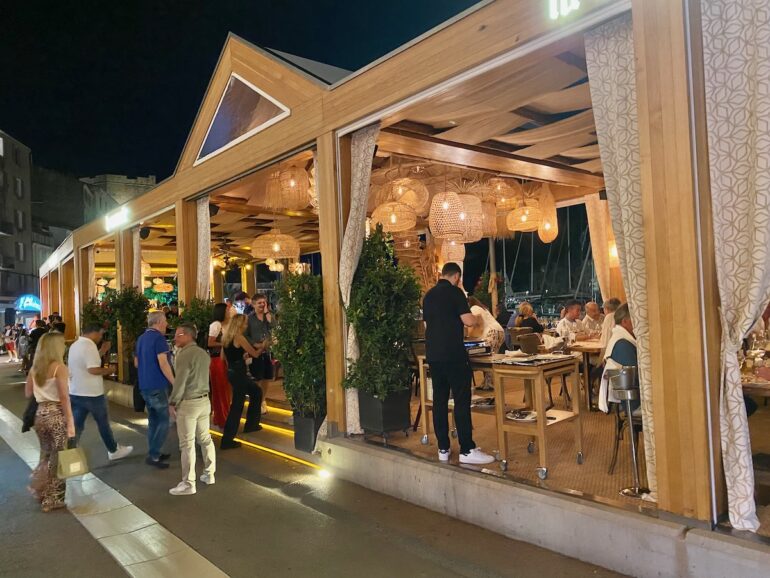 The establishment we visited the most was L’Ortulinu, a boulangerie and epicerie with excellent bread, fresh vegetables, and a custard pie (simply called “flan”) that blew our minds.
The establishment we visited the most was L’Ortulinu, a boulangerie and epicerie with excellent bread, fresh vegetables, and a custard pie (simply called “flan”) that blew our minds.


 Unlike in Paris, we actually did cook a couple of times, including with gorgeous local langoustines and clams. And we ate a lot of potato chips. (Why must flavored chips have so much sugar?)
Unlike in Paris, we actually did cook a couple of times, including with gorgeous local langoustines and clams. And we ate a lot of potato chips. (Why must flavored chips have so much sugar?)
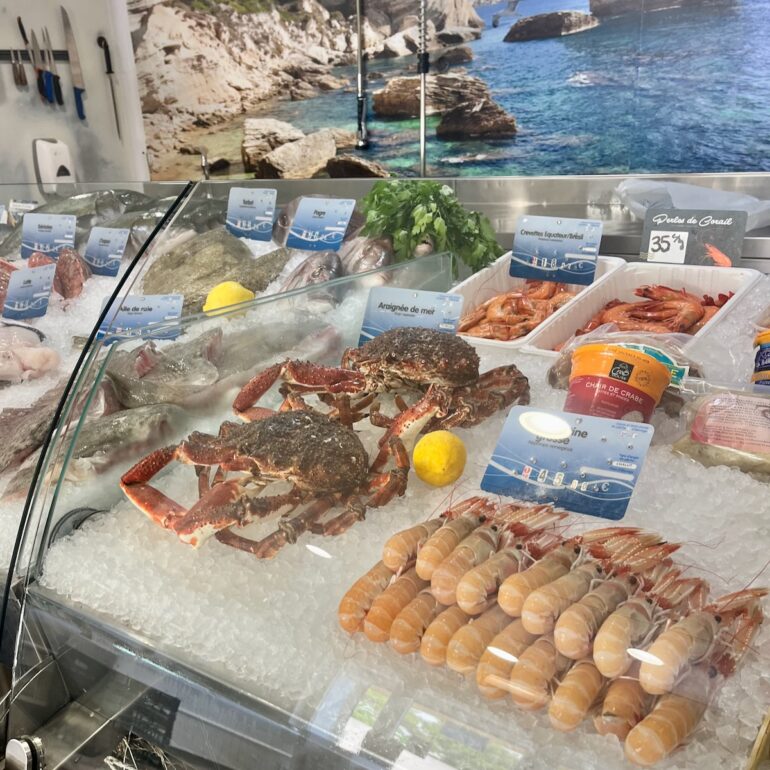
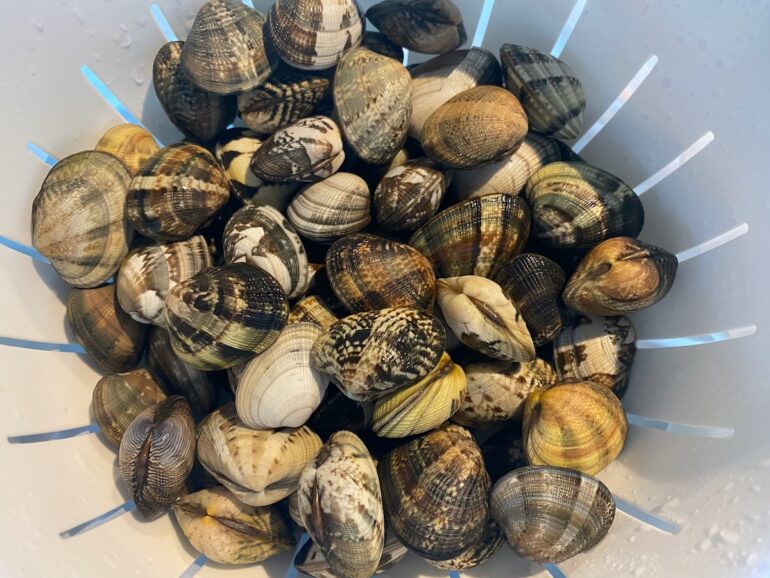
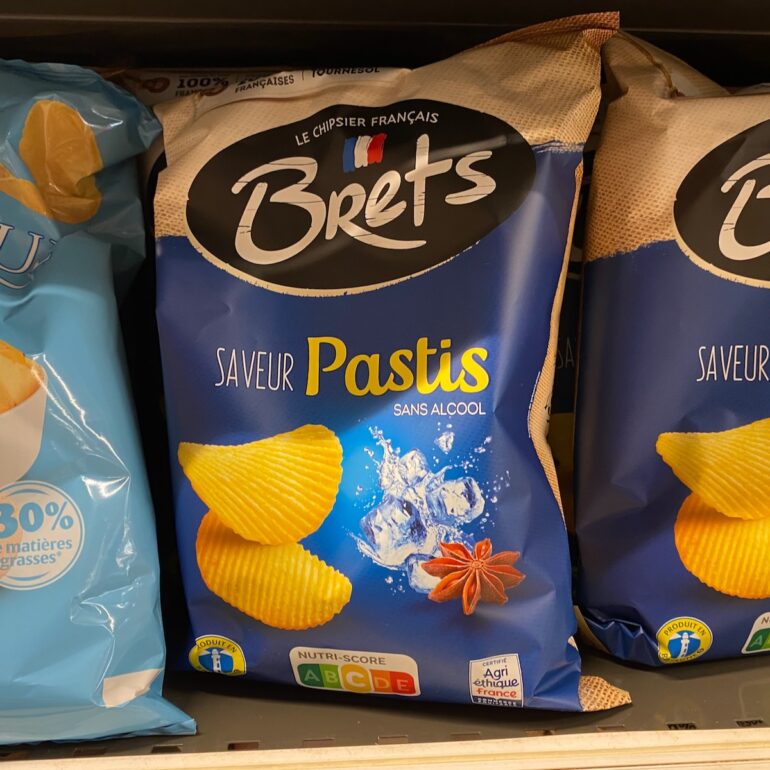 Our friends have a three-year-old, so they spent most days hanging out at the beach. Adam and I like more activity, so we went on two hikes that proved harder than anticipated. The first one, Sentier de Fenu, started out easy enough, but the last hour was all uphill. In between were some lovely payoffs, including secluded beaches and a lighthouse with stone steps down to a stunning pool. I stripped down for a refreshing mid-hike dip—time for OnlyFans?—and managed to get dry and dressed right before a large group arrived.
Our friends have a three-year-old, so they spent most days hanging out at the beach. Adam and I like more activity, so we went on two hikes that proved harder than anticipated. The first one, Sentier de Fenu, started out easy enough, but the last hour was all uphill. In between were some lovely payoffs, including secluded beaches and a lighthouse with stone steps down to a stunning pool. I stripped down for a refreshing mid-hike dip—time for OnlyFans?—and managed to get dry and dressed right before a large group arrived.
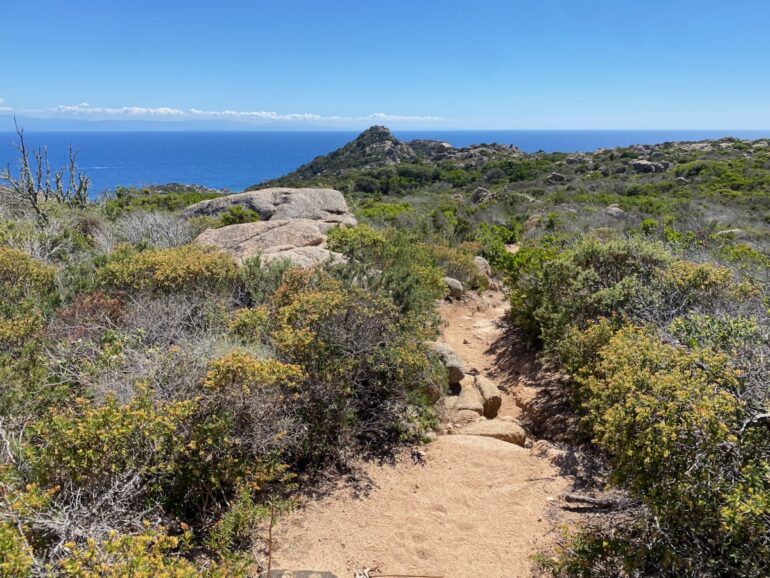
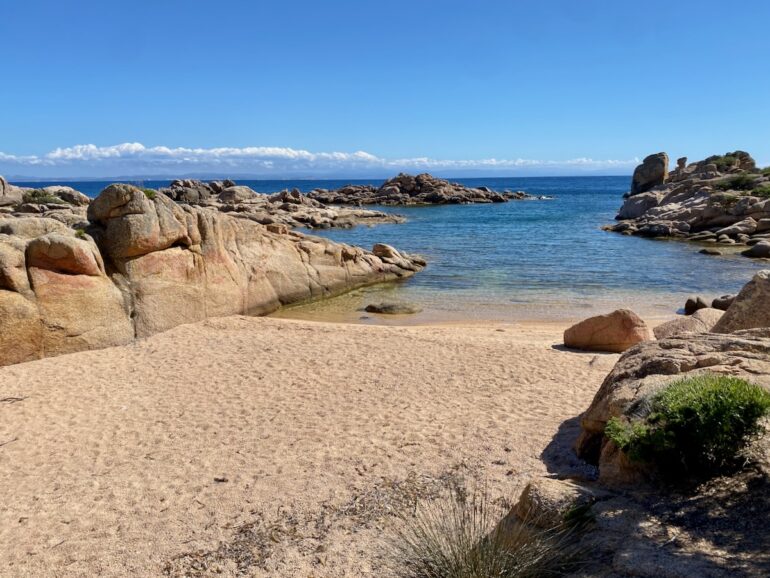
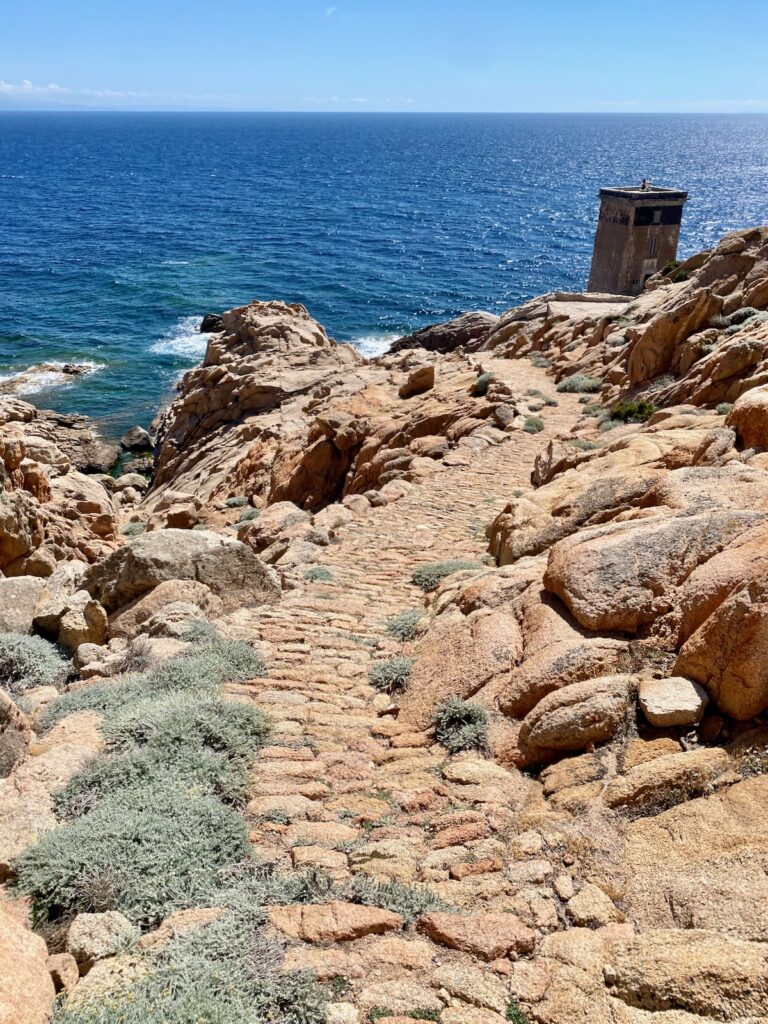
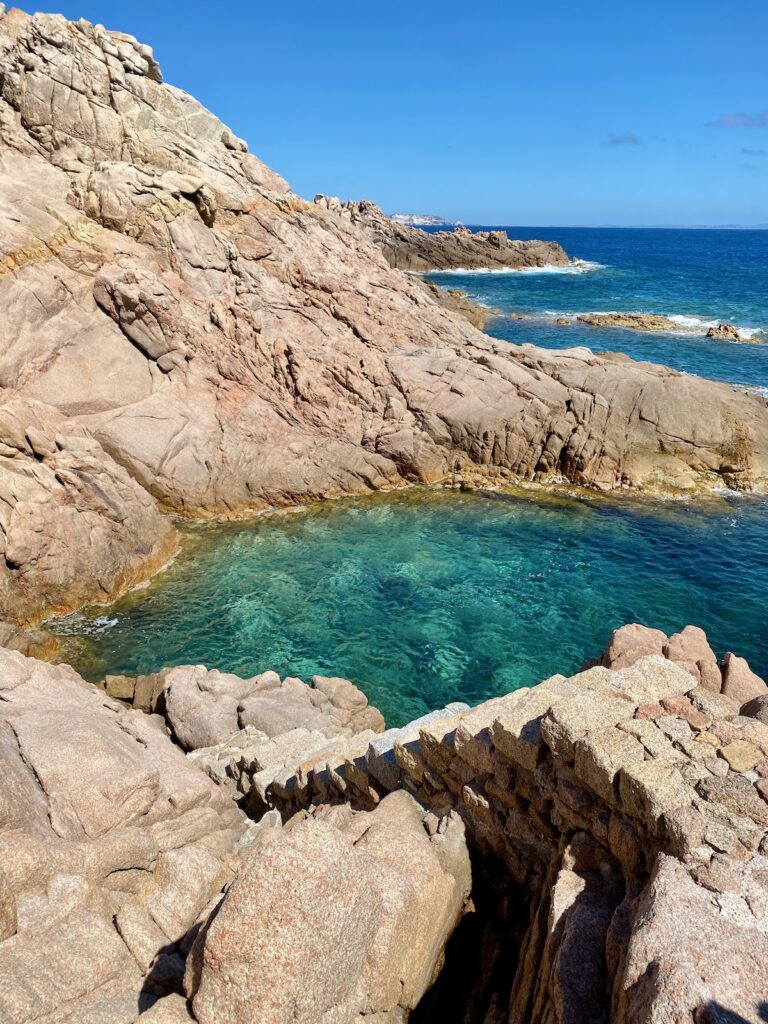 The second hike was between two spectacular beaches, Plage de Roccapina and Plage d’Erbaghju, on the island’s western coast; both were too windy to enjoy much but sure looked good from up high. If there was a trail on the Roccapina side, however, we lost track of it early on. Instead, we bushwhacked our way up to the old stone tower, where we had a picnic lunch.
The second hike was between two spectacular beaches, Plage de Roccapina and Plage d’Erbaghju, on the island’s western coast; both were too windy to enjoy much but sure looked good from up high. If there was a trail on the Roccapina side, however, we lost track of it early on. Instead, we bushwhacked our way up to the old stone tower, where we had a picnic lunch.


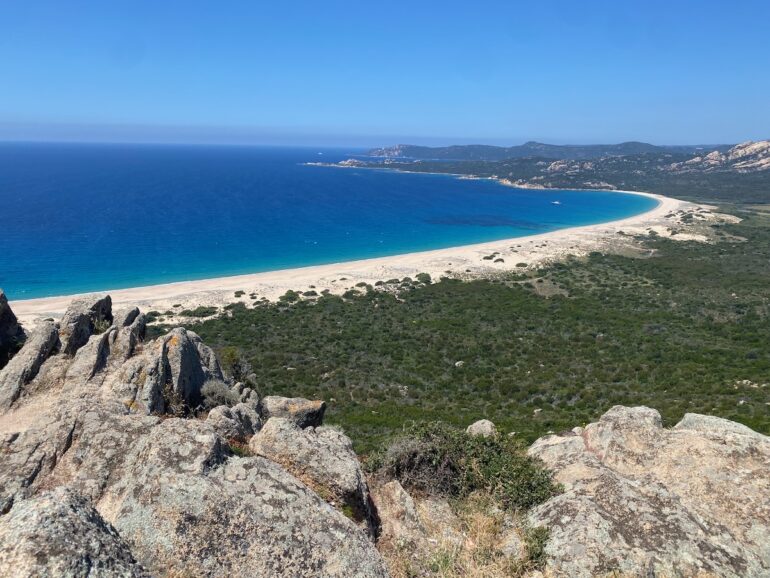
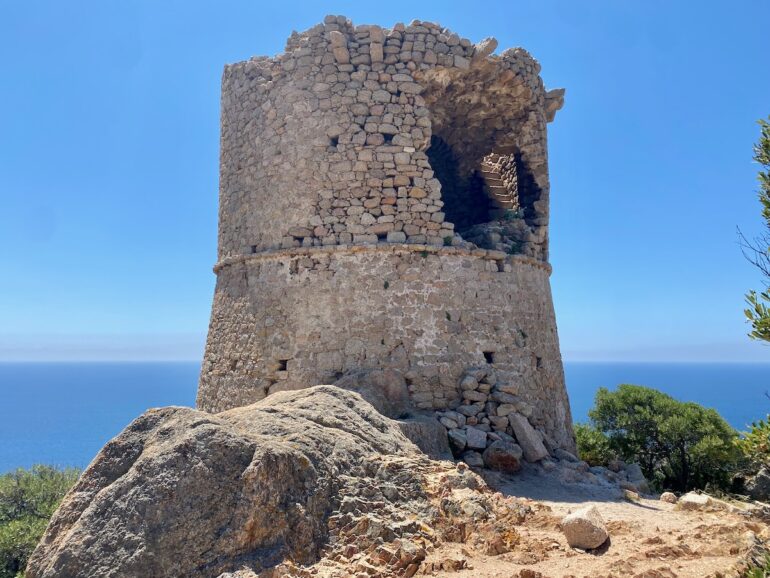 Our friends loved the town of Porto Vecchio, but Adam and I botched our visit there. The only town of note that he and I visited was Sartène, notable for its mountainside location and relatively tall buildings. Adam asked for directions as we approached; one look at the map and you can see why I was flummoxed.
Our friends loved the town of Porto Vecchio, but Adam and I botched our visit there. The only town of note that he and I visited was Sartène, notable for its mountainside location and relatively tall buildings. Adam asked for directions as we approached; one look at the map and you can see why I was flummoxed.
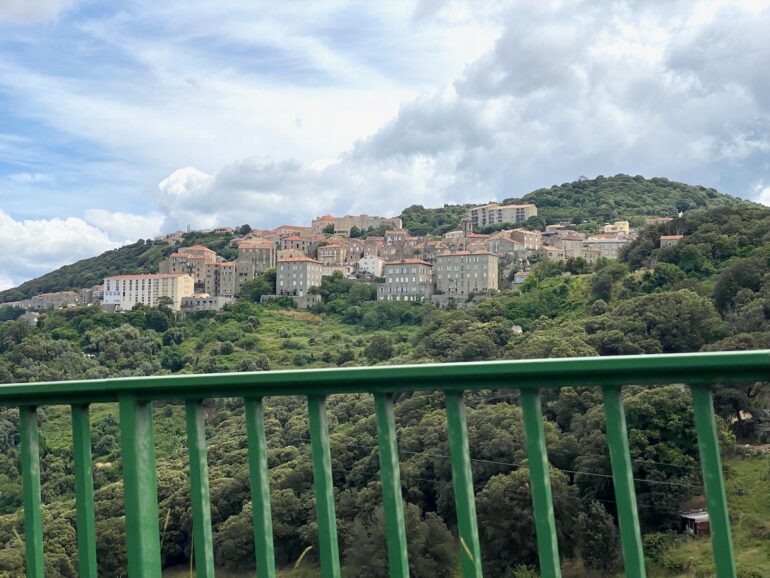
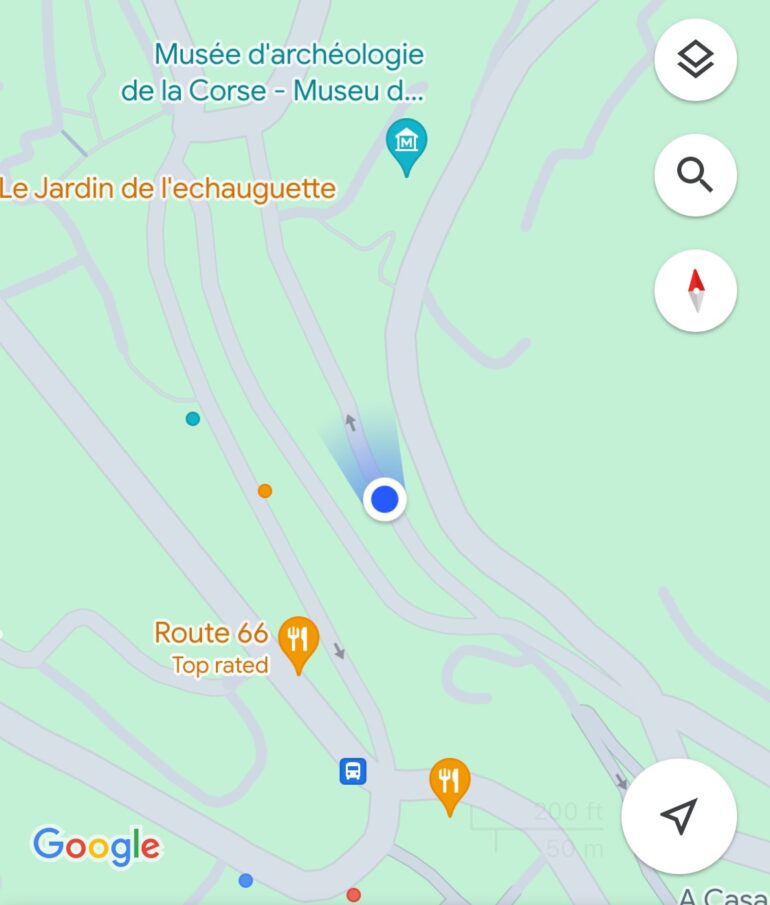 Sartène is a hoot to explore because it’s like Chutes and Ladders, but with streets running one way and stairs the other.
Sartène is a hoot to explore because it’s like Chutes and Ladders, but with streets running one way and stairs the other.
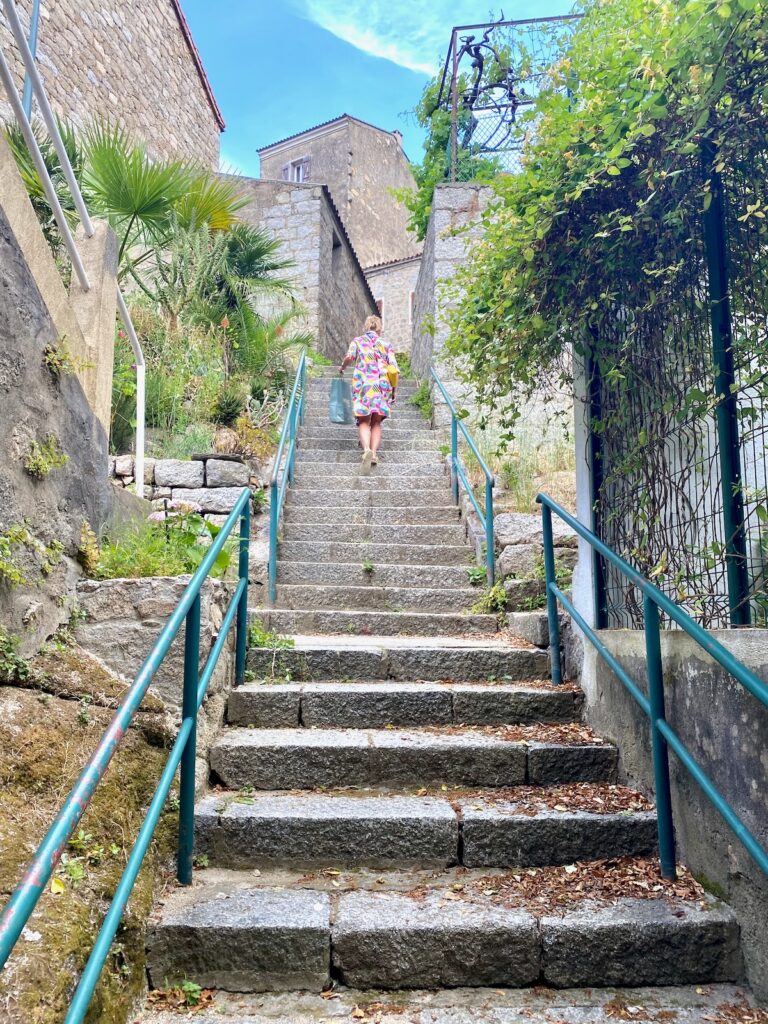
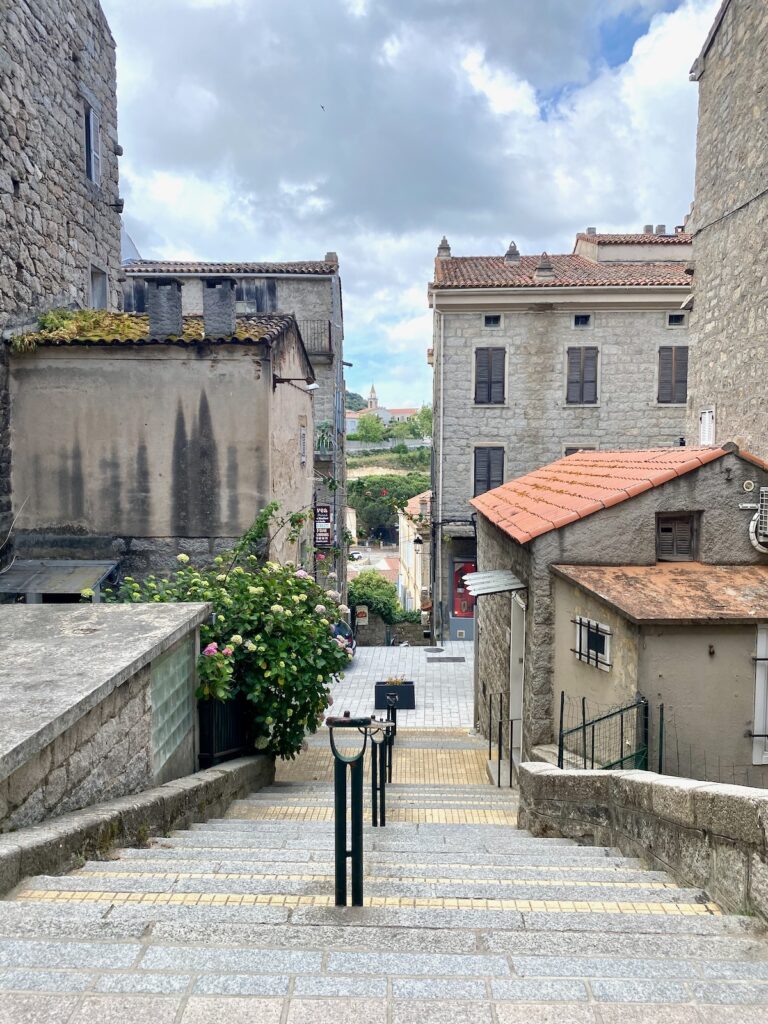
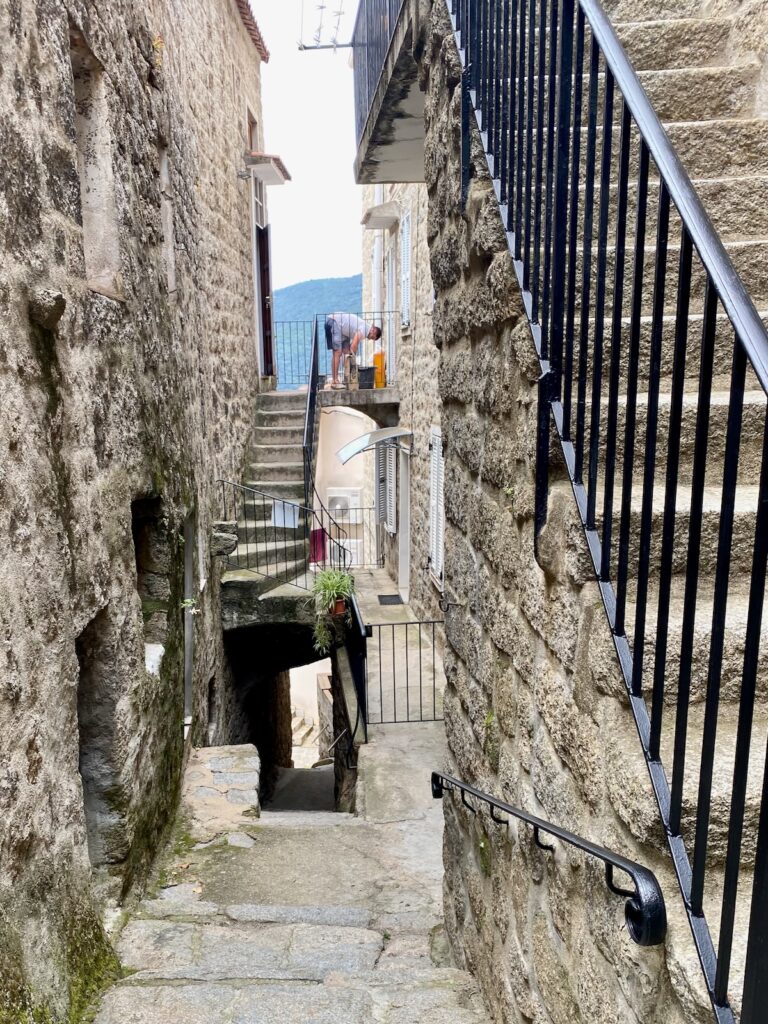
Our big regret—besides not asking how many toilets were in the villa—was that we didn’t rent a boat and spend significant time on the water. The weather always seemed iffy, particularly at the start of the trip, and we realized too late that the east side of the island is calmer than the west. But Adam and I did take a marvelous kayak trip to a beach, Grand Sperone, that’s otherwise hard to access. The water is incredible, and the beach is a slice of heaven.
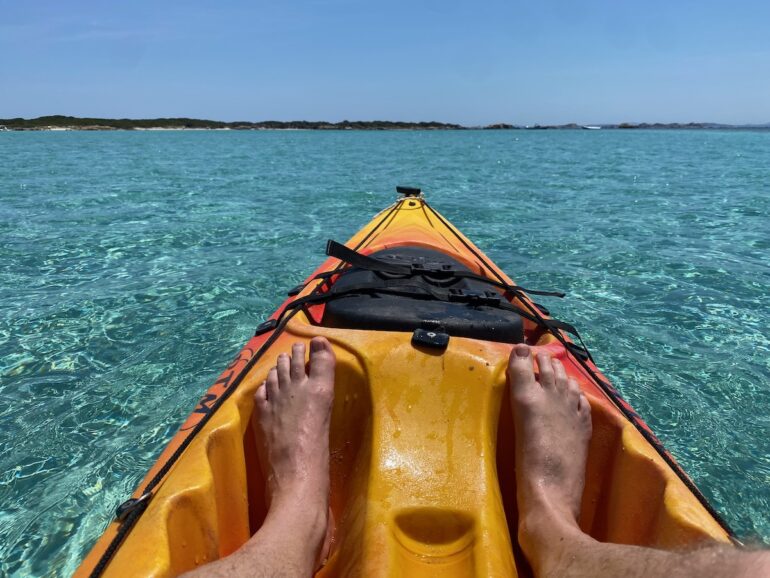
 Getting to the kayak rental kiosk requires walking on a rocky bit of shoreline, which Adam found frustrating in flip-flops, so for the return trip to the car, I suggested he swim instead. I was joking, but he went and did it. Amazing how spouses can still surprise you after all these years.
Getting to the kayak rental kiosk requires walking on a rocky bit of shoreline, which Adam found frustrating in flip-flops, so for the return trip to the car, I suggested he swim instead. I was joking, but he went and did it. Amazing how spouses can still surprise you after all these years.
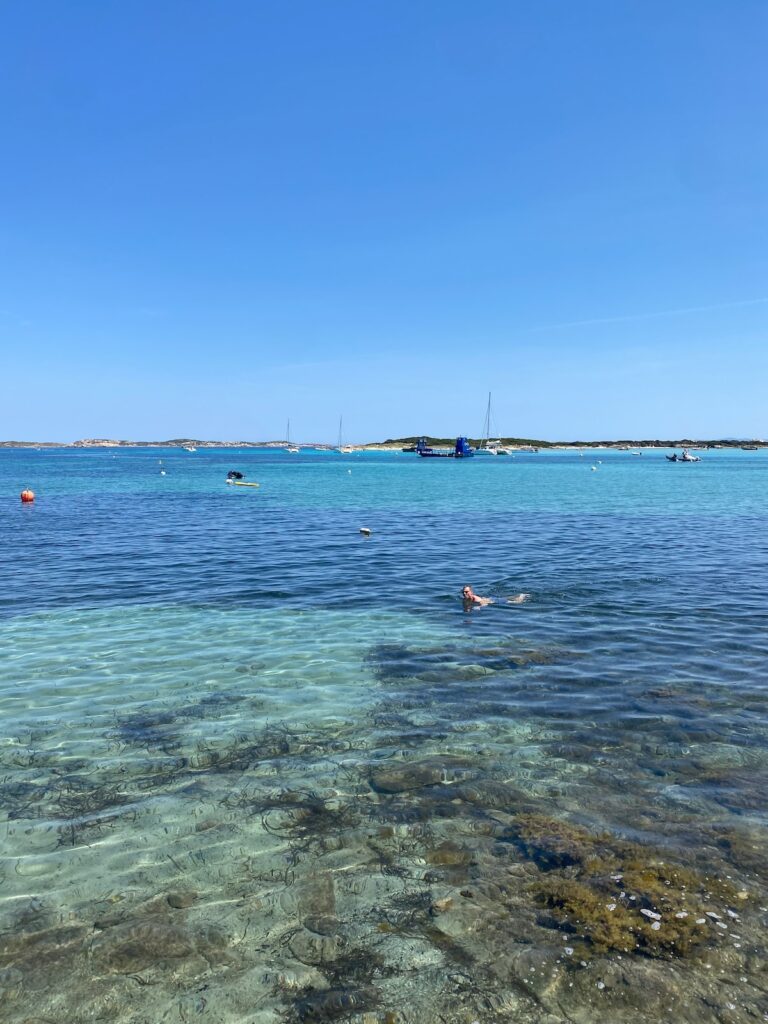 Would we go back to Corsica? Yes. Will we? Probably not—too many other places, too little time. If we ever do, we’ll make an effort to explore the north of the island, too; book through a local agent; and rent a boat. And we’ll definitely drink more beer while sitting on a swing.
Would we go back to Corsica? Yes. Will we? Probably not—too many other places, too little time. If we ever do, we’ll make an effort to explore the north of the island, too; book through a local agent; and rent a boat. And we’ll definitely drink more beer while sitting on a swing.
Previous travel coverage:
••• The Exquisite Luxury of Taking Paris for Granted
••• Santa Rosa Island in One Day
••• Soaking Up History at Castle Hot Springs
••• Driving Through the Heart of Hokkaido
••• Tokyo Is a World Unto Itself
↓↓↓ Paso Robles, Pinnacles National Park, and Beyond
••• A Review of the Inn at Mattei’s Tavern
••• Another Quickie in L.A.
••• Sitting Pretty at the One & Only Mandarina
••• The Mysteries of Istanbul
••• Palm Springs: Midweek at the Oasis
••• Exploring the Sea Caves of Santa Cruz Island
••• A Summer Swing Through the Northeast
••• Why Is Everyone Going to Portugal?
••• Patagonia Made Easy
••• A Quickie in L.A.
••• From Penthouse to Pavement in Mexico City
••• Do Greek Islands Live Up to the Fantasy?
••• Splendid Isolation at Utah’s Lodge at Blue Sky
••• Three Reasons to Visit Paso Robles Now
••• The Rebirth of the Cuyama Buckhorn


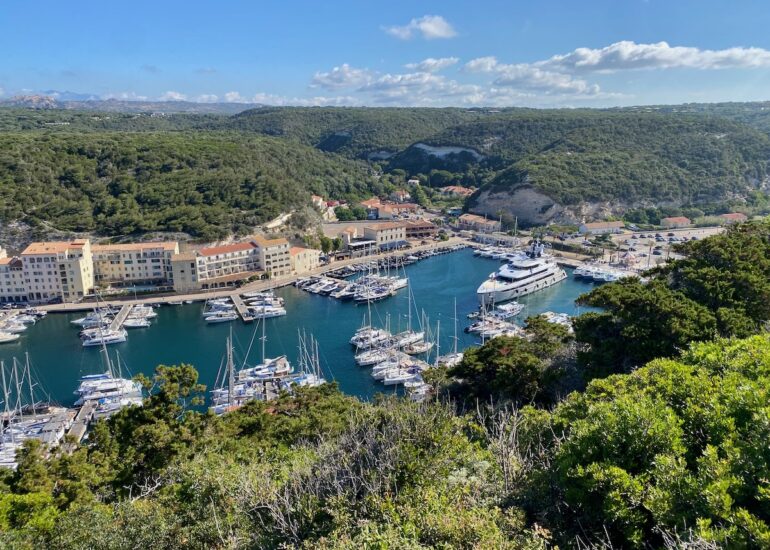
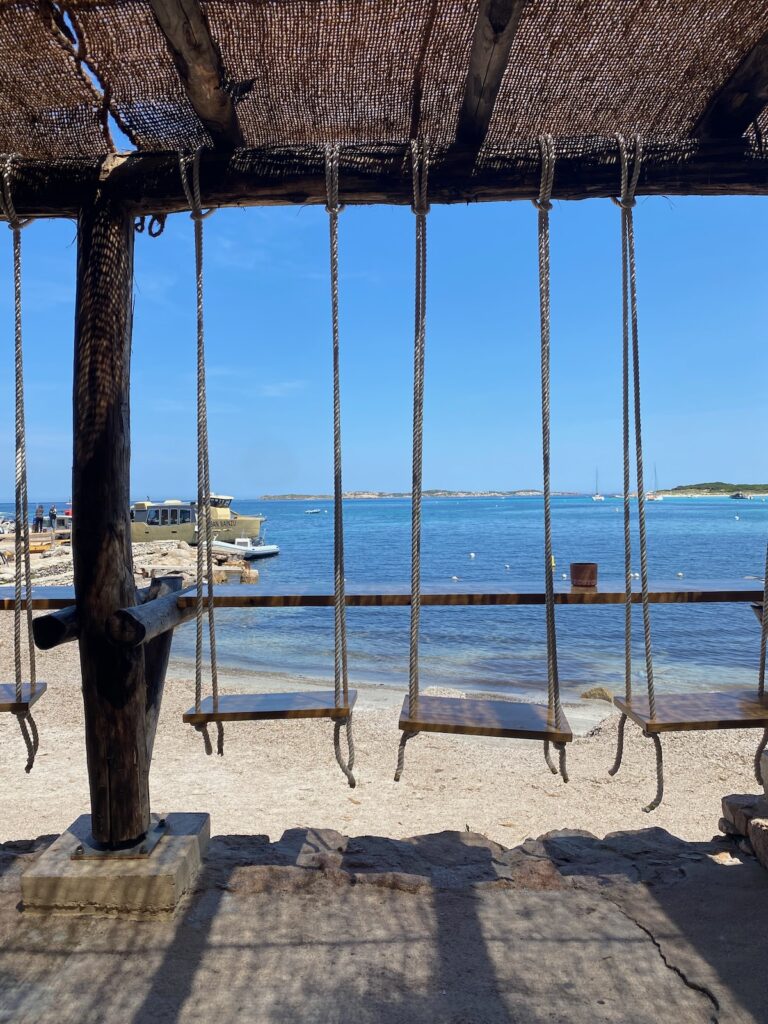




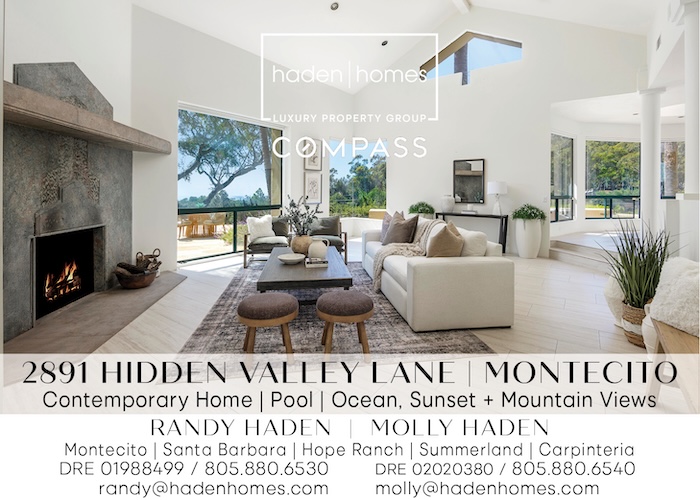
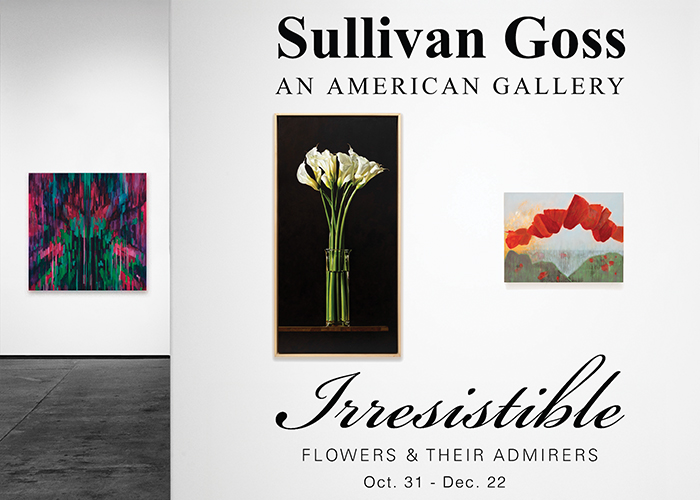


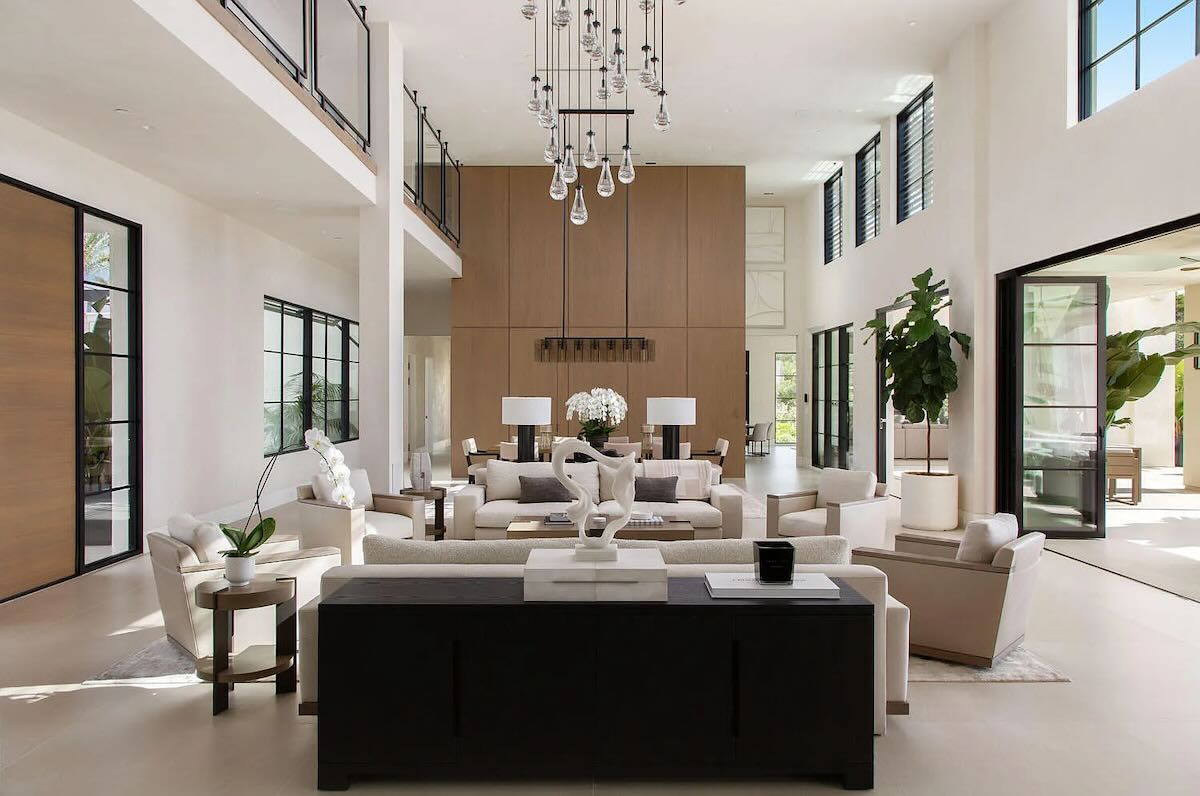



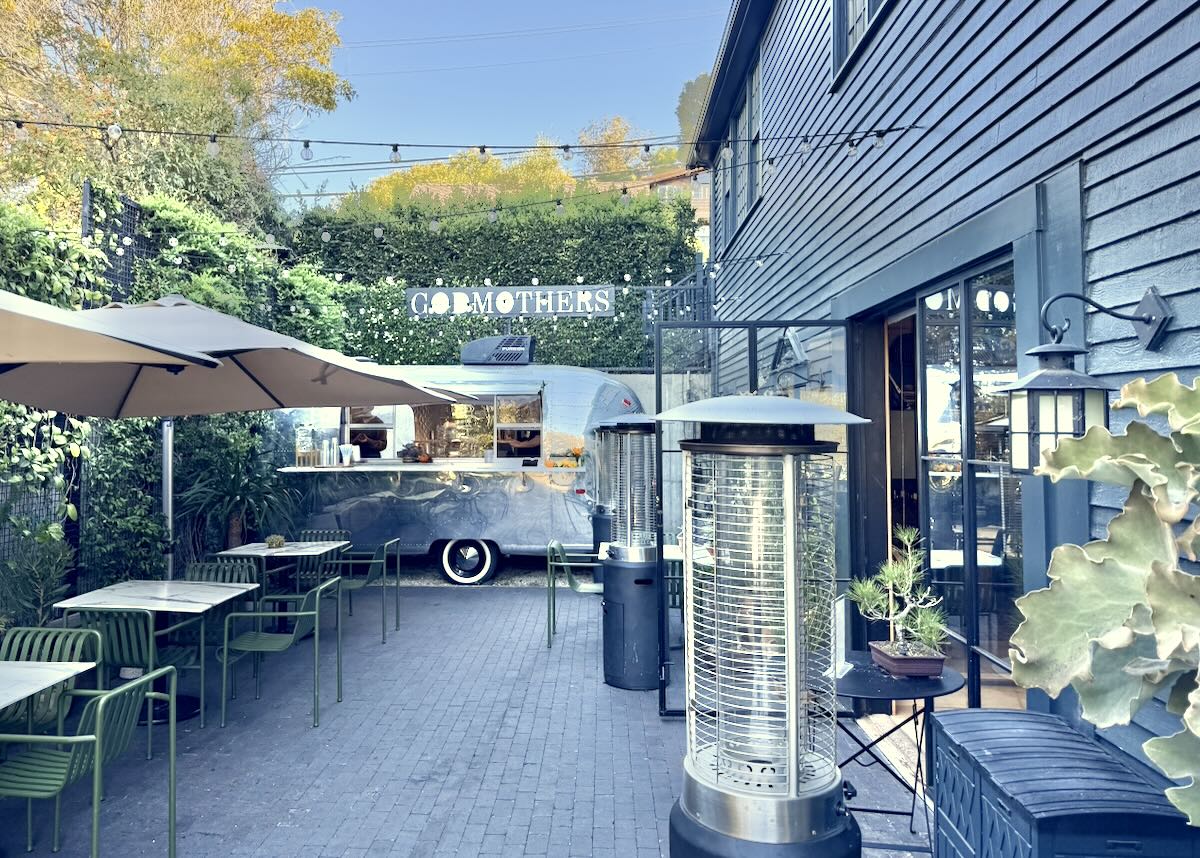
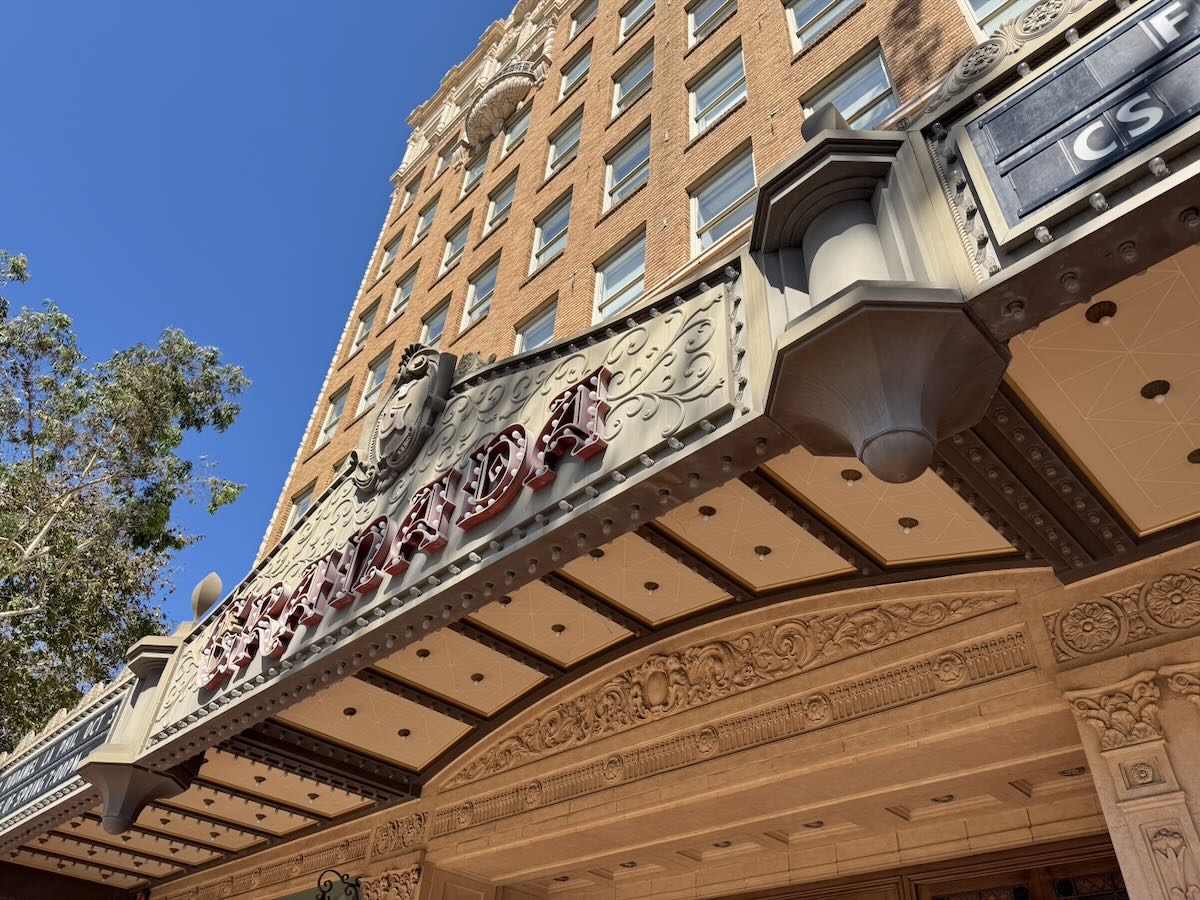

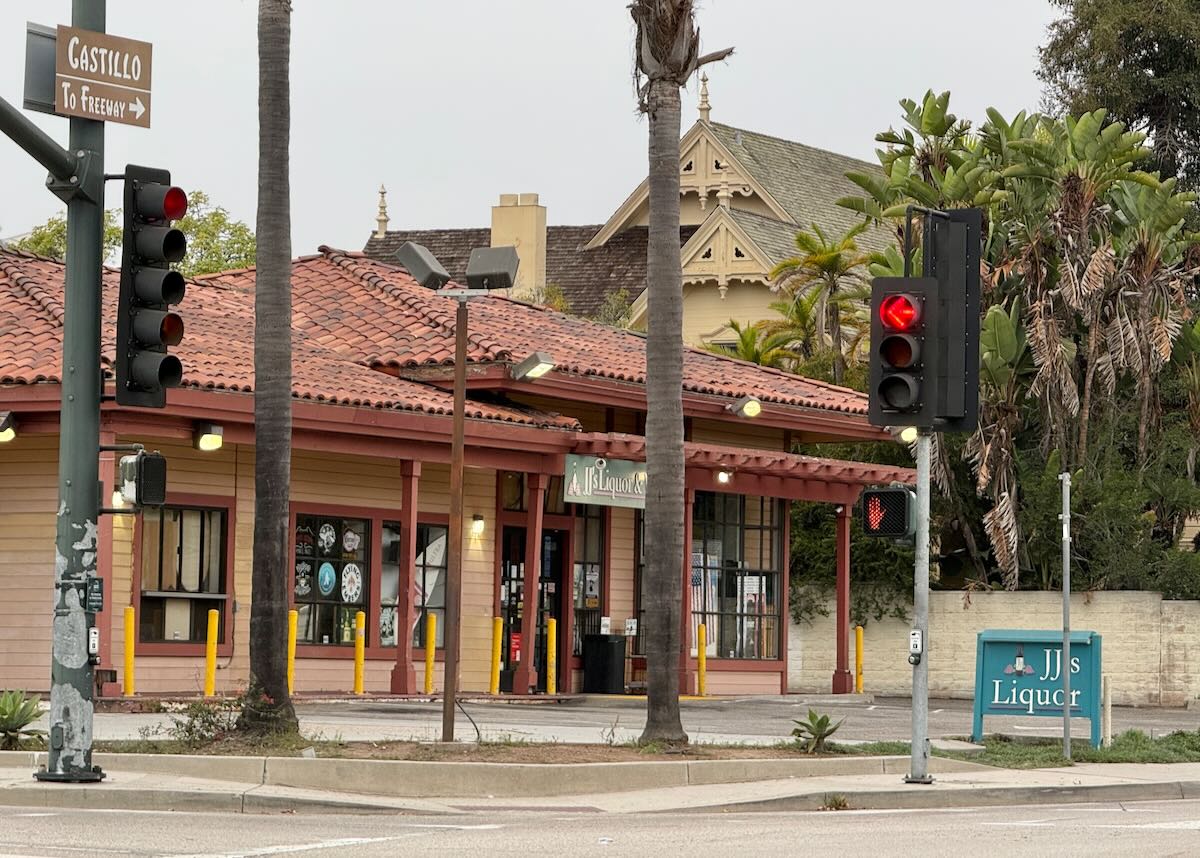

The Mediterranean mooring/docking method is always stern to the quay, and there is a scary passerelle, basically a narrow gangplank from stern to dock that one has to navigate. It’s a way to save space, and it’s complicated by two anchors and sometimes other necessities. Most def rent a boat next time.
P. S. Love your travelogues.